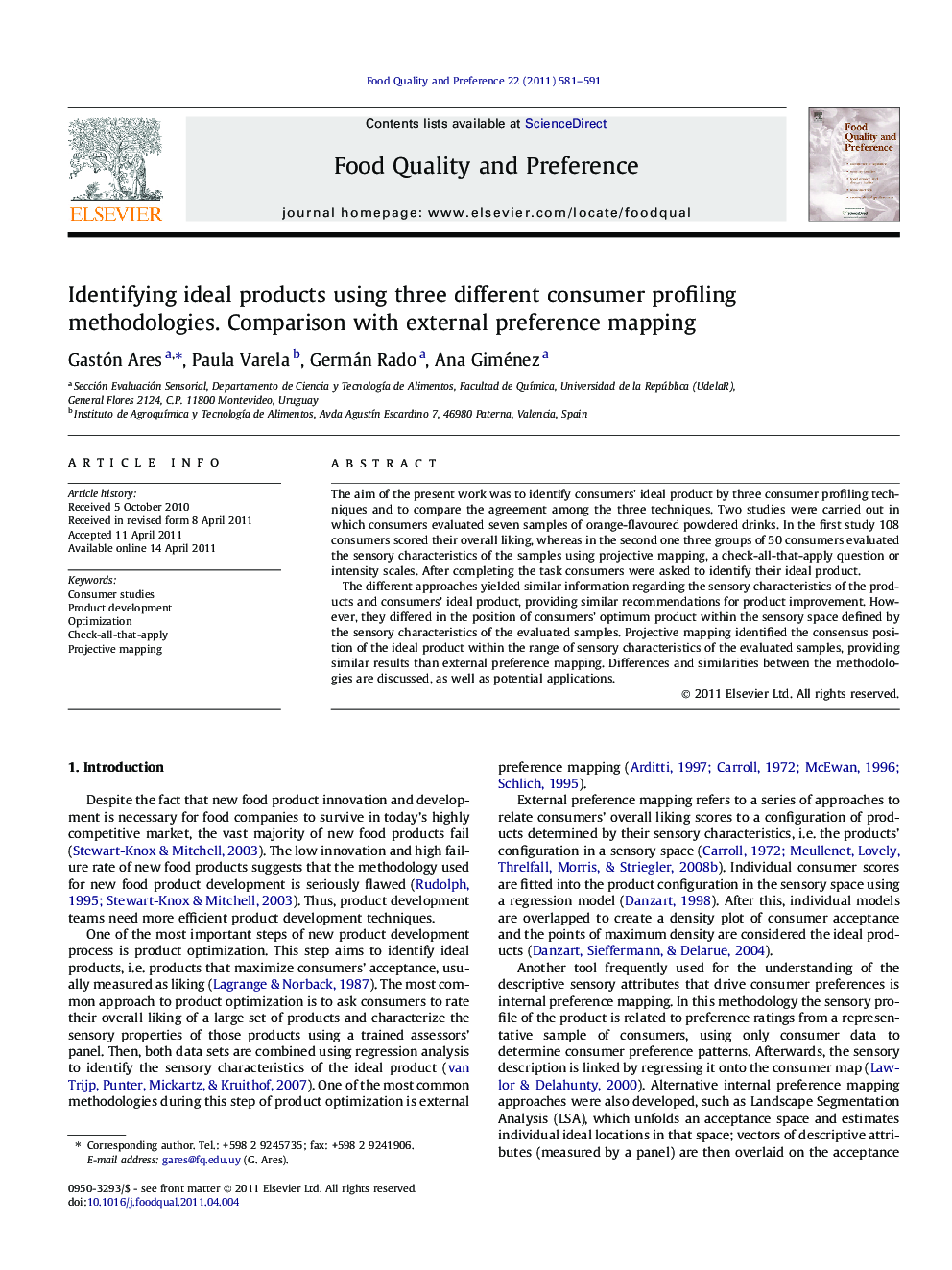| Article ID | Journal | Published Year | Pages | File Type |
|---|---|---|---|---|
| 4317721 | Food Quality and Preference | 2011 | 11 Pages |
The aim of the present work was to identify consumers’ ideal product by three consumer profiling techniques and to compare the agreement among the three techniques. Two studies were carried out in which consumers evaluated seven samples of orange-flavoured powdered drinks. In the first study 108 consumers scored their overall liking, whereas in the second one three groups of 50 consumers evaluated the sensory characteristics of the samples using projective mapping, a check-all-that-apply question or intensity scales. After completing the task consumers were asked to identify their ideal product.The different approaches yielded similar information regarding the sensory characteristics of the products and consumers’ ideal product, providing similar recommendations for product improvement. However, they differed in the position of consumers’ optimum product within the sensory space defined by the sensory characteristics of the evaluated samples. Projective mapping identified the consensus position of the ideal product within the range of sensory characteristics of the evaluated samples, providing similar results than external preference mapping. Differences and similarities between the methodologies are discussed, as well as potential applications.
► Three consumer profiling techniques were used to identify consumers’ ideal product. ► The information provided regarding the sensory characteristics of the ideal was similar. ► External preference mapping provided similar information than projective mapping.
